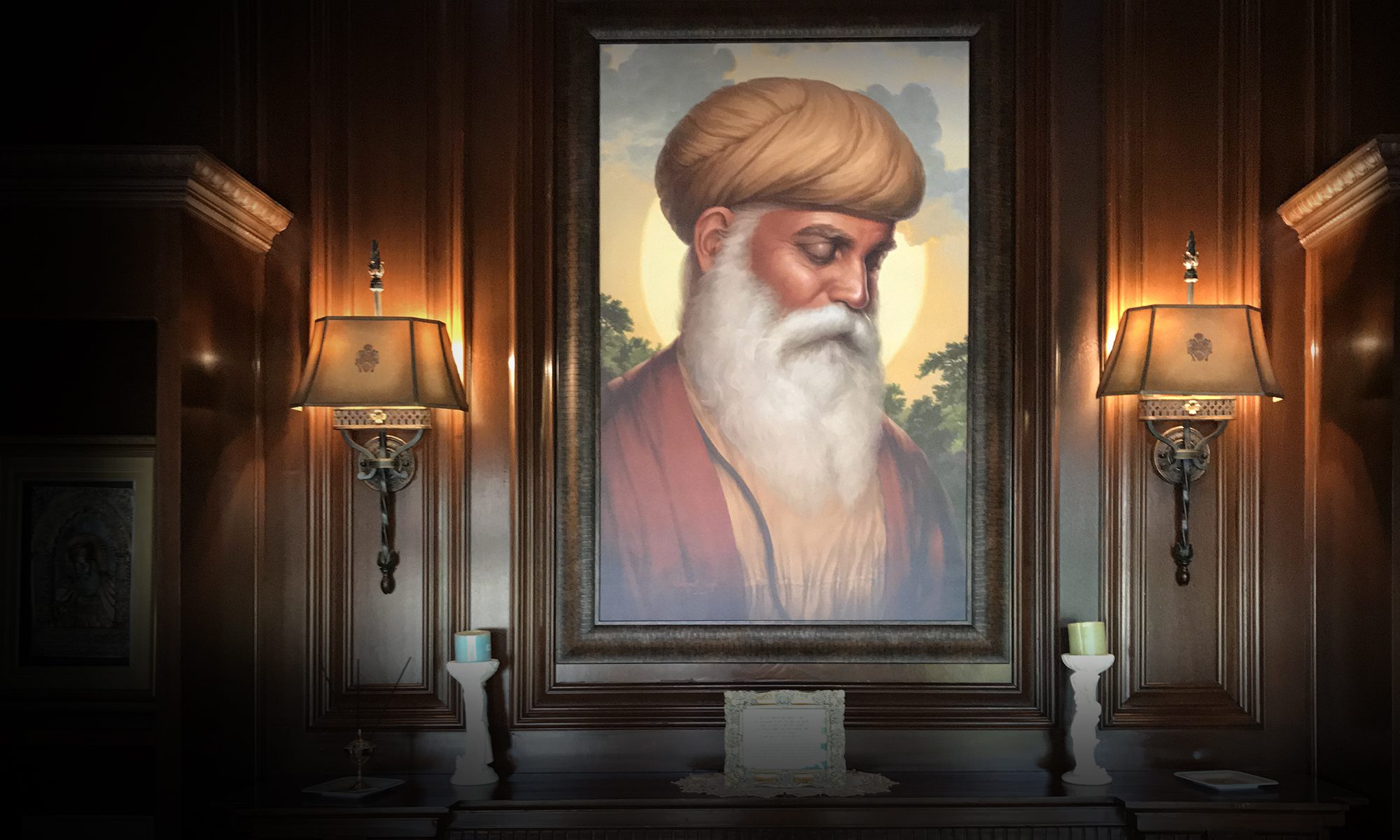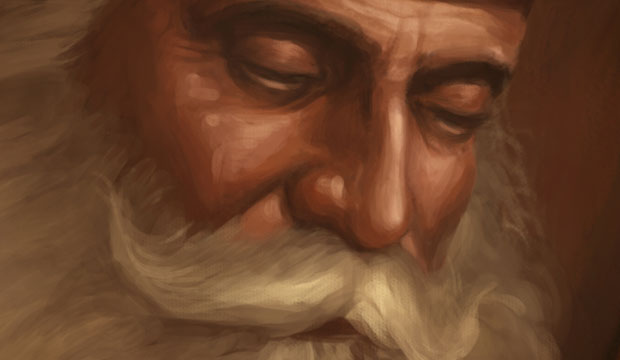“Travelling in total darkness, Hari’s name will light the way. “
– Guru Arjun Dev ji (Guru Granth Sahib, 264)
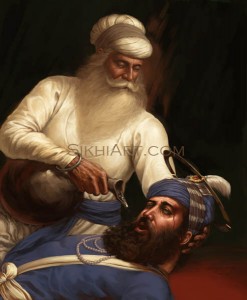
Order Your Prints Now
$82.00 – $3,400.00Select options This product has multiple variants. The options may be chosen on the product page
| Premium Gloss Canvas | Cost | Enhanced Matte Paper | Cost |
| Small (19″ x 16″) | $299 | Small (19″ x 16″) | $59 |
| Medium (29″ x 24″) | $399 | Ultrasmooth Fine Art Paper | Cost |
| Large (44″ x 36″) | $599 | Medium (29″ x 20″) | $199 |
| Grand (53″ x 44″) | $899 | Large (44″ x 36″) | $399 |
| Unique (67″ x 55″) | $2499 | – | – |
*Your Premium Canvases are carefully hand-stretched around thick wooden bars to hold them taught. Hanging bits are included so that your canvas is ready to hang as soon as you receive it!
Artist’s Notes
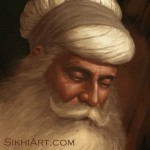
This becomes the basis for this painting of Bhai Kanhaiya ji.
There is a gruesome battle going on around Bhai Kanhaiya ji and amidst the chaos, he is feeding water to an injured Mughal soldier. The ground is covered in his blood.
However the painting departs from the realism of a battlefield and instead depicts the experience of Bhai Kanhaiya ji, his internal state, where he is witnessing Waheguru alone, even inside the Mughal soldier. The soldier appears to him as Guru Gobind Singh ji, who is a physical representation of Waheguru.
Background
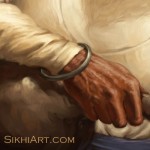
Bhai Kanhaiya ji’s father was a wealthy trader, however Bhai Sahib was looking for something other than material wealth. He left home and sought after the company of Sadhus and Saints, of those who possessed spiritual wealth. Eventually he met Guru Tegh Bahadur ji and stuck with him. Selfless service became Bhai Kanhaiya ji’s main mission. He opened a centre in current-day Pakistan for helping people regardless of their background.
In 1705, he was visiting Anandpur in Punjab, when Anandpur was under attack by the Mughals and Hill Chiefs. During the Battles of Anandpur, Bhai Kanhaiya ji would go around and serve water to all fallen soldiers, to the wounded and dying men in the battlefield, regardless of who they were. Guru Gobind Singh ji’s sikhs complained to the Guru that Bhai Kanhaiya was reviving the enemy soldiers. Guru Sahib called Bhai Sahib and asked him to explain himself. Bhai Kanhaiya ji responded that he saw no friends or foes, he only saw the Divine shining through. Guru ji approved of his actions and gave him bandages to further his mission.
A Closer Look
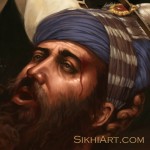
Dumalla means ‘two turbans’. One turban was wrapped around the head, where the folds were wrapped in a way that it covered the whole head. The second turban was used to tighten the first turban and secure it on the head.
A small bit of the second turban was pulled up and fanned to form the farla, and a protruding bit below the kalgi could be tucked easily into the second turban to hold the kalgi upright. In this manner, the dumalla was decorated.
